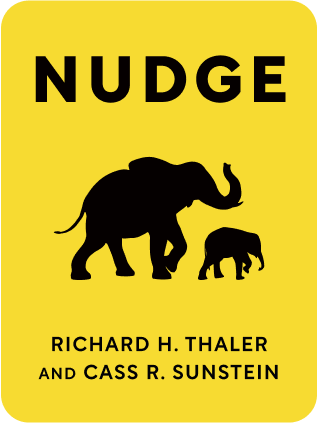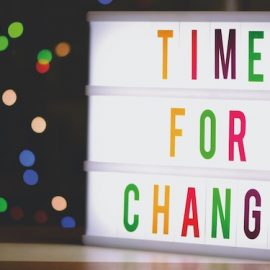

This article is an excerpt from the Shortform summary of "Nudge" by Richard H. Thaler and Cass R. Sunstein. Shortform has the world's best summaries of books you should be reading.
Like this article? Sign up for a free trial here .
What is automatic thinking? How does it differ from reflective thinking?
Automatic thinking is your instant reaction. It is different from thinking that is part of the Reflective System. When you use automatic thinking, you make decisions quickly and without much consideration.
Read more about automatic thinking and what it is used for.
Reflective vs. Automatic Thinking
Many psychologists and neuroscientists have begun to theorize the brain’s function by drawing a distinction between intuitive, instinctual, automatic thinking and deliberate, rational thinking: the Automatic System and the Reflective System.
The Automatic System comprises the almost instantaneous actions or reactions that, in normal conversation, we might call “unthinking.” This system is engaged when we flinch at motion near our face or adopt a silly voice to address a pet or child; it also includes what we mean when we say we have a “gut feeling” about something. (It also happens to be the part of our brain we share with our pets.)
The Reflective System, oppositely, is what we engage when we apply our brains to something consciously, for example, a nonobvious math problem or a career decision. When we say we’re “mulling it over” or “considering all the options,” we’re using the Reflective System.
| Automatic Thinking System | Reflective Thinking System |
| Fast Unconscious Immediate Mindless Easy | Slow Conscious Delayed Mindful Labor-intensive |
Although the Automatic System is essential in certain situations—for example, when we grasp the railing if we trip on the stairs—it can get us into trouble when a situation calls for slow, conscious thought (for example, when deciding with health insurance plan to choose). A key finding of the behavioral economics literature is that humans far too often think automatically when they should be thinking reflectively.
The Automatic System Overpowering the Reflective System
Psychologists have determined that we engage with the world through two systems: one with automatic thinking, which is intuitive, instinctual, and immediate; and the Reflective, which is rational, deliberative, and delayed. Certain decisions—choosing the appropriate risk allocation for your 401(k), for example—require the Reflective System, but we all too often “go with our gut,” meaning we rely on our intuition rather than cold, cool thinking.
External Strategies for Self-Control
Coextensive with our two systems of thinking, the Automatic and the Reflective, are two discrete selves: a “Planner,” who attempts to organize our lives rationally so that we avoid temptation, and a “Doer,” who’s easily swayed by momentary feelings and desires.
Although Planners can be quite effective at restraining Doers—by buying smaller packages of sweets, say, or placing the alarm clock where a Doer can’t hit the Snooze button—sometimes they need help from external sources.
Internal Strategies for Self-Control
While some Planners lean on external methods to help keep their Doers in check, others adopt internal strategies. A primary example of an internal method of self-control is “mental accounting”—the process whereby individuals or households designate funds for particular uses.
Automatic Thinking in Action: Savings
A troubling economic trend among contemporary Americans is the declining savings rate. (In 2005, thanks to abundant, cheap credit and low interest rates, Americans spent more and the American savings rate was actually negative for the first time since the Great Depression.) Given the ever-growing strains on the Social Security system, which is likely headed for insolvency, Americans will need to save more themselves to enjoy a comfortable retirement. But how do you get people to save more without infringing the principles of economic liberty?
Thaler and Sunstein propose two nudges: automatic enrollment in savings plans and a new savings vehicle, the “Save More Tomorrow” program.
Save More Tomorrow
Another way to nudge workers, especially younger ones, to increase their savings rate is to adopt a program of escalating contribution percentages.
Developed by Thaler and another behavioral economist named Shlomo Benartzi, the Save More Tomorrow program ties contribution increases to pay raises. With each raise, an employee’s contribution to his or her retirement plan increases by a predetermined percentage.
In the pilot implementation of a Save More Tomorrow plan in 1998, researchers found that a large majority—nearly 80%—of employees who were resistant to increasing their savings rate immediately were amenable to the Save More Tomorrow option. As it turned out, the workers who opted into the program ended up saving the most among their colleagues; and when they maxed out their allowable contribution under the terms of the plan, they simply left their contribution at that maximum rate (the human tendency to inertia at work!).
Of course, the most effective way to nudge workers toward a Save More Tomorrow program is to automatically enroll people in it. The Safelite Group was the first to auto-enroll its employees in a Save More Tomorrow program, and it saw only 6% opt out after its first year.

———End of Preview———
Like what you just read? Read the rest of the world's best summary of Richard H. Thaler and Cass R. Sunstein's "Nudge" at Shortform .
Here's what you'll find in our full Nudge summary :
- Why subtle changes, like switching the order of two choices, can dramatically change your response
- How to increase the organ donation rate by over 50% through one simple change
- The best way for society to balance individual freedom with social welfare






